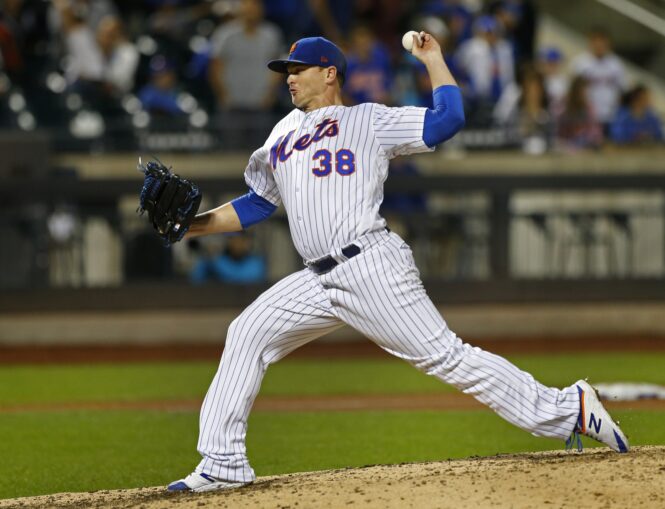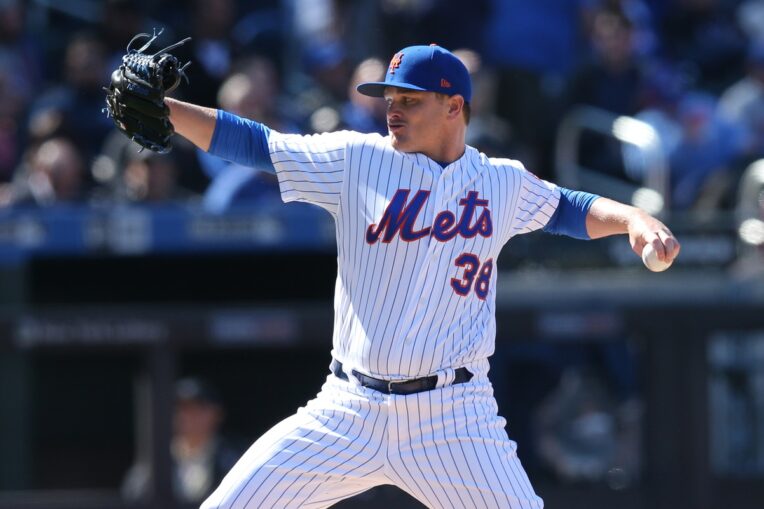
New York Mets general manager Brodie Van Wagenen had a busy offseason remaking the roster in a way he felt would be competitive in 2019. The organization has experienced some ups and downs, but they have at least been playing some meaningful baseball into the month of September, which has been fun to watch.
Despite all of the winter activity, not a ton of his acquisitions have panned out the way everyone was hoping. J.D. Davis is the one very obvious exception to this statement, along with Robinson Cano and Edwin Diaz being the more obvious examples that help prove this theory true.
As time has gone on, though, more of BVW’s offseason acquisitions have been playing well enough to retract that statement (to a degree). Wilson Ramos has been productive at the plate in the second half, Luis Avilan has turned things around, and Justin Wilson has quietly become the club’s closer during Diaz’s struggles.
The start of Wilson’s tenure in Flushing didn’t go smooth, as his first 10 appearances yielded a 4.82 ERA, which also included multiple trips to the injured list. But since he returned on July 2nd, his 1.71 ERA over his most recent 26.1 frames has him among baseball’s best relievers.
He’s performed so well during this prolonged stretch that his season-long numbers are showing just how good he’s been. While Wilson’s 0.3 fWAR isn’t in the neighborhood of what he’s produced in recent years, there are other stats that show a hurler who has taken a huge step forward. His 2.52 ERA is on track to be his best since he first became a regular reliever in 2013, when he posted a 2.08 mark with the Pittsburgh Pirates.
But after watching his strikeout rate settle in at 32.3% and 29.2% the past two years heading into 2019, that number is slightly down at 26.5%. So how exactly has he experienced so much success with the Mets? It’s because he’s been controlling a couple of important aspects of his game.
The Control Is…Under Control
A big issue Wilson had between 2017 and 2018 (and it happened mostly during his 1.5 seasons with the Chicago Cubs) was a rise in walk rate. Here’s a quick look at how his walk rates had fluctuated since posting a career-best mark with the Detroit Tigers in 2016.
| Year | IP | BB% |
|---|---|---|
| 2016 | 58.2 | 6.8% |
| 2017 (w/ DET) | 40.1 | 10.2% |
| 2017 (w/ CHC) | 17.2 | 20.9% |
| 2018 | 54.2 | 14.0% |
Through 35 innings with New York this season, Wilson has brought his walk rate back down to a much more manageable 10.6%. With a 1.32 WHIP that’s on track to be his best since 2017, the southpaw has also seen a major improvement in his strand rate.
It’s been on a steady rise since posting a 70.8% mark in ’16, as that number has gone to 76.8% and 78.9% in the two years that followed. However, the increase has been much more drastic in 2019 (albeit in fewer innings), as it currently stands at 87.6%. If he can keep it above 80.0%, it’ll be the first time he’s finished with his strand rate this high since 2013 when it was 84.9%.
Huge Batted-Ball Profile Improvements
This increased stinginess with allowing base runners and stranding the ones who do actually reach has also been paired with improvements in his batted-ball profile that we haven’t seen since 2016. Here’s a look at how those numbers have changed over the years.
| Year | LD% | GB% | FB% | IFFB% | Soft% | Hard% |
|---|---|---|---|---|---|---|
| 2016 | 14.8% | 54.9% | 30.2% | 12.2% | 16.1% | 25.6% |
| 2017 (w/ DET) | 12.8% | 38.4% | 48.8% | 9.5% | 23.3% | 31.4% |
| 2017 (w/ CHC) | 28.9% | 35.6% | 35.6% | 12.5% | 17.4% | 28.3% |
| 2018 | 24.4% | 35.1% | 40.5% | 11.3% | 19.4% | 28.4% |
| 2019 | 22.2% | 52.2% | 25.6% | 0.0% | 23.7% | 32.2% |
One has to imagine that a dramatic shift in Wilson’s pitch mix has brought this change about. During that stellar 2016 campaign in Detroit, the lefty used his cutter at a then-career-high 29.1% rate. That percentage began a significant downward trend over the next couple years, bottoming out last season at 15.0%.
That’s completely changed with the Mets, as his 52.0% four-seam usage rate is a career low, while his 39.1% cutter usage rate is easily on track to be a new career high. When looking at relievers with at least 30 innings pitched, his usage rate for this offering is among the 15 highest in baseball. After watching opposing hitters post a 147 wRC+ with a 52.9% ground-ball rate against it in 2018, those numbers have gone all the way down to 38 and 62.8%, respectively, in 2019.
It certainly seems like the 32-year-old has found something from his past that he lost in recent years. Let’s hope he continues finding success with this approach while he remains in Queens
















